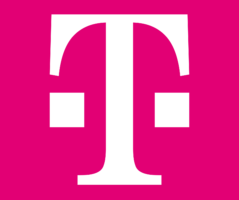In the two years since the Sprint merger, T-Mobile has pushed forward with the deployment of its 5G network and is ahead of schedule and ahead of the competition, Neville Ray told the UBS Future of 5G Event live webcast last week.
T-Mobile’s next “big push” will be to roll out 5G in the PCS 1.9 GHz band, according to Ray. Together with the carrier’s AWS portfolio (1710-1755 and 2110-2155 MHz), it has 110 MHz of FDD spectrum.
Ray updated the audience on the carrier’s mid-band 2.5 GHz TDD spectrum coverage plans, which included 225 million people as of Q1. Its goal is to extend that number to 260 million by the end of the year, and 300 million by the end of 2023. T-Mobile now has an average of 100 MHz of spectrum across a nation dedicated to 5G in the mid band, which Ray said is more than AT&T and Verizon combined, and the T-Mobile 5G spectrum is expected to double by the end of 2023.
“Mid-band spectrum is really delivering the truly transformative 5G experience that we’ve all been excited about and talking about for several years,” Ray said.
Ray also touched on the first layer of the spectrum cake, FDD 600 MHz spectrum, where the carrier covers 95 percent of the population. Because T-Mobile built a dedicated network at 600 MHz, it did not have to use the dynamic spectrum sharing approach used by the other carriers, which have had to add 5G users on to spectrum that had 4G LTE users.
“It’s a massive buildout, with massive spectrum,” Ray said. “We are the first company that is really delivering a cohesive 5G set of services and capabilities.”
Ray referenced the news that Inside Towers reported last week that the carrier is rolling out voice over new radio, noting it is the first of the 5G services it would soon feature. “We’re moving into a level of delivery of 5G capability and services that our competition just can’t match at this point in time,” he said. “So I’m super excited to talk about what we’re already doing with 5G. But when you think about the innovation and development activity that’s ongoing, there will be more to come as we move into the next two to five years.”
What’s Next
T-Mobile has not even started deployment activity in the 3.45 GHz and C-band spectrum, more for technical reasons than anything else, according to Ray. Currently, to deploy across the spectrum, it takes two radios. T-Mobile plans to wait until a fully combined radio covering all of the mid-band spectrum is available, which is expected to be next year. In March, Ericsson asked the FCC for permission to build a radio that would serve both the 3.45 GHz band and the C-band (3.55 GHz – 4.0 GHz).
By J. Sharpe Smith, Inside Towers Technology Editor





Reader Interactions